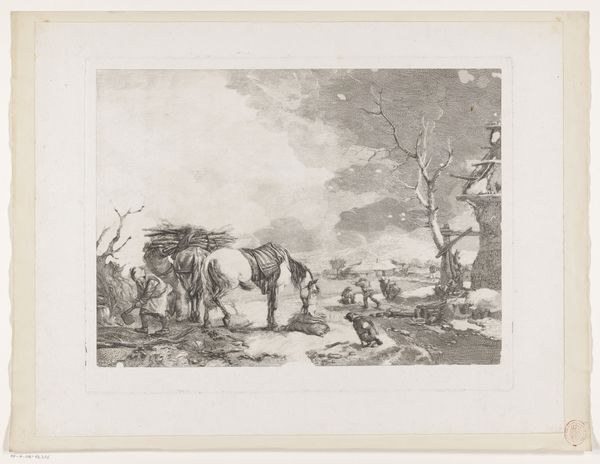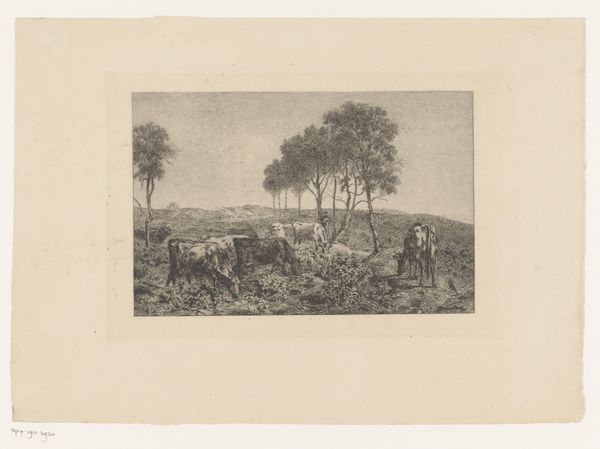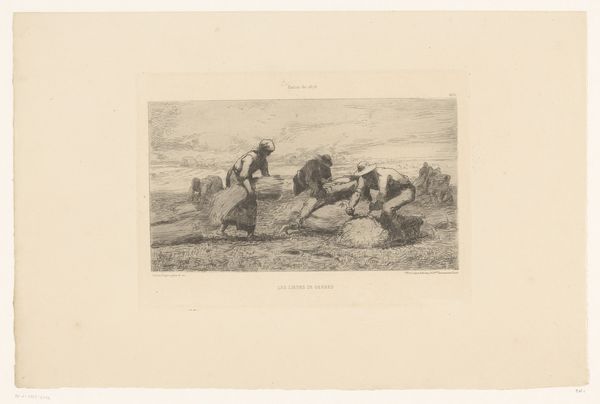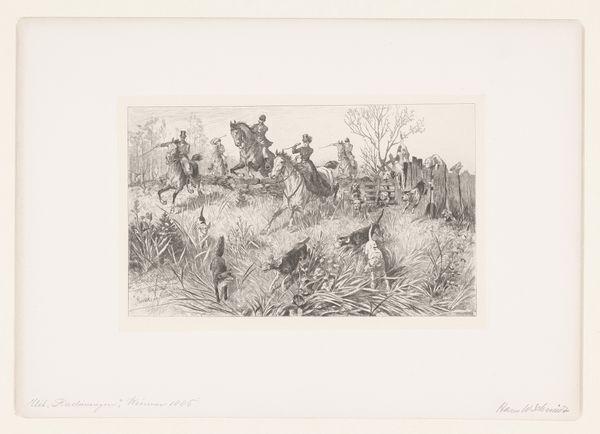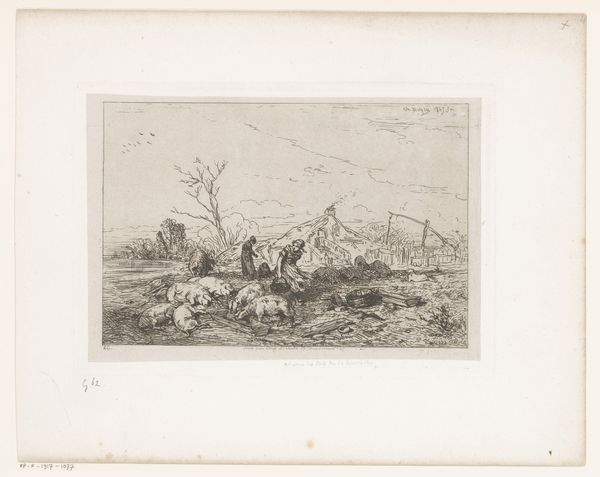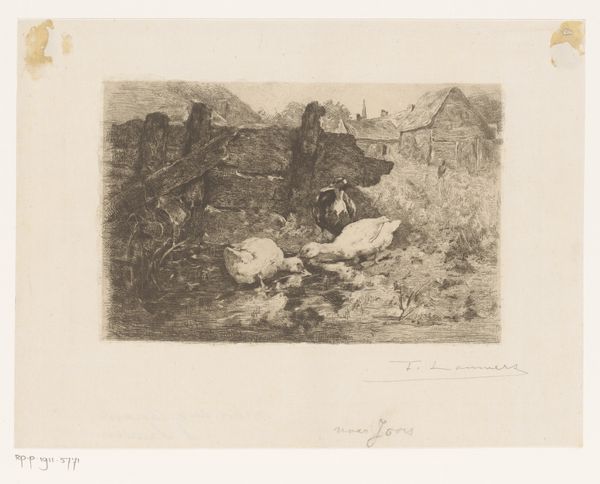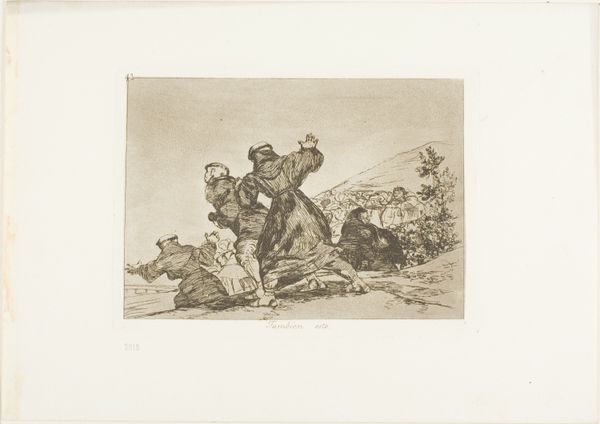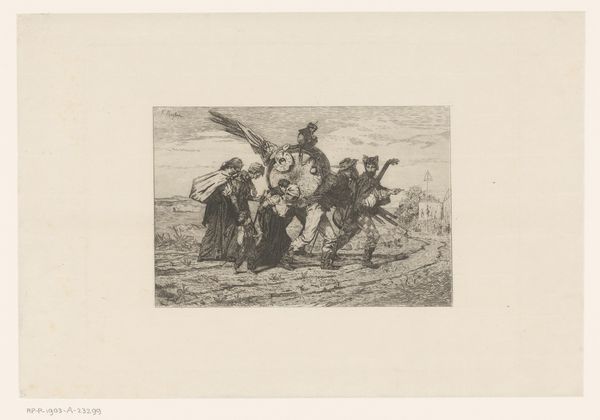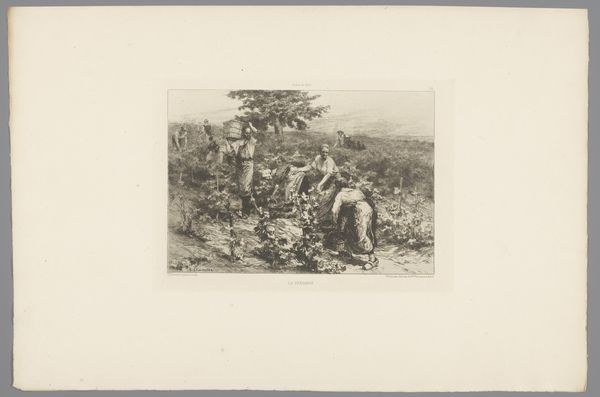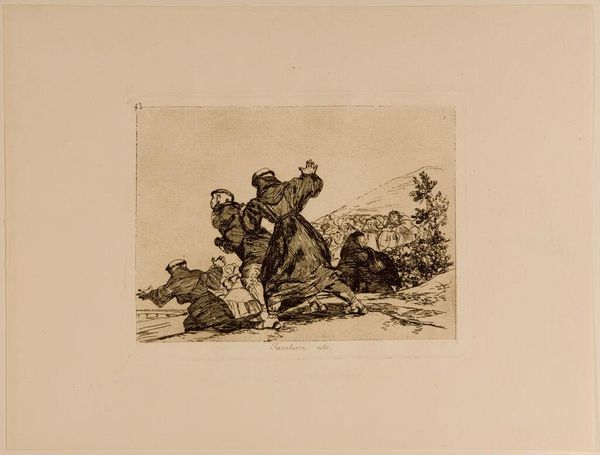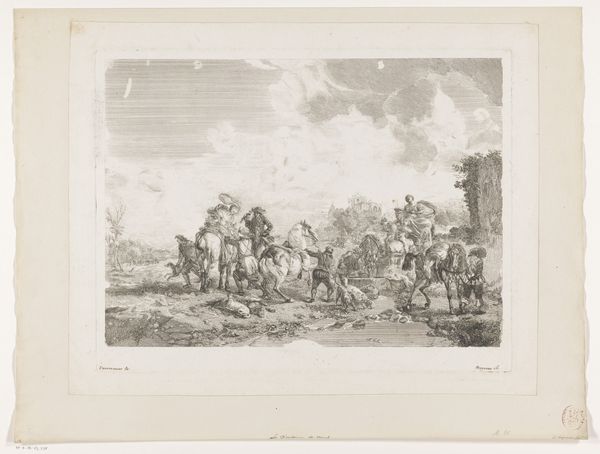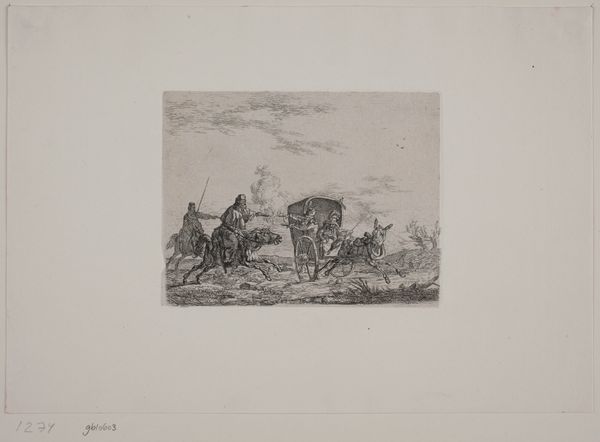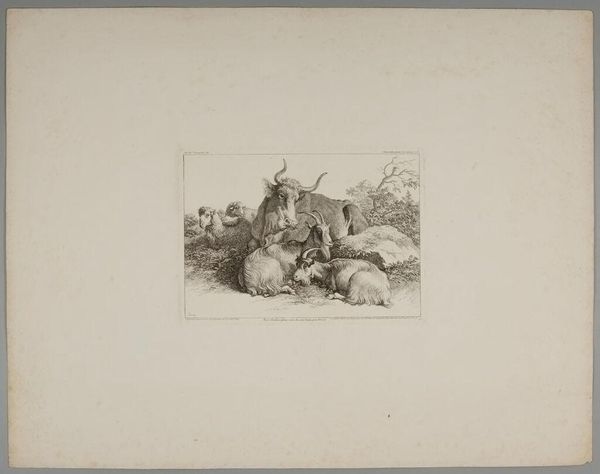
drawing, print, etching, paper
#
pencil drawn
#
photo of handprinted image
#
drawing
#
aged paper
#
light pencil work
#
ink paper printed
# print
#
etching
#
pencil sketch
#
old engraving style
#
paper
#
pen-ink sketch
#
watercolour illustration
#
italy
#
watercolor
Dimensions: 253 × 470 mm (image); 341 × 543 mm (primary support); 359 × 566 mm (plate); 501 × 750 mm (secondary support)
Copyright: Public Domain
Curator: What a wonderfully energetic image! All that swirling line work… it practically vibrates off the page. Editor: Indeed. What you're experiencing is Giovanni Fattori's etching "The Cavalry Charge," created in 1889. It resides here at the Art Institute of Chicago. Looking at the physical materials gives us an insight into its creation; an etching made using paper, likely available at the time, speaks to broader production contexts. Curator: Production? I am immediately drawn to the deployment of lines, the frenzied hatching giving form to charging horses and riders. It’s a whirlwind, almost indiscernible chaos contained within the borders of the image. Notice how the density of the marks increases toward the center, emphasizing the heart of the action. Editor: Right, and we can link that chaos to a period in Italian history of immense upheaval. Fattori, a prominent member of the Macchiaioli group, captured the social realities, not merely aesthetics. We cannot overlook that it may depict battles that redefined power structures. His choice of printmaking also democratized art production. Curator: Yes, but look again. The formal elements tell a story. Observe how light is treated, barely suggested with sparse lines towards the upper portion and how the overall lack of distinct forms in the background adds to the disorienting impact of war. The viewer has to construct much from mere suggestion; he’s not detailing propaganda or glorification; instead he shares lived, tumultuous reality, rendered dynamically by lines and shades. Editor: Lived reality indeed, influenced by the resources at hand and choices inherent in that moment of labor. Availability dictated Fattori's etching practices: metal plates, acid baths... It speaks volumes about Italy's industrial ability and international exchanges within the creative ecosystem. Curator: Perhaps. For me it evokes timeless visual elements—dynamic diagonals and skillful balancing act between order and mayhem that speaks loudly. These are design elements which contribute primarily to the emotional depth within “Cavalry Charge”. Editor: That is insightful, if a tad too removed from practical forces fueling it all, the economics allowing creation of that plate. A full appreciation blends material and emotion… Curator: Well said, truly blending both of our appreciation yields new layers to this etching's complex beauty. Editor: Indeed. It leaves you reflecting deeper, understanding process influences on aesthetics beyond simple observation.
Comments
No comments
Be the first to comment and join the conversation on the ultimate creative platform.
